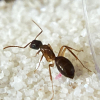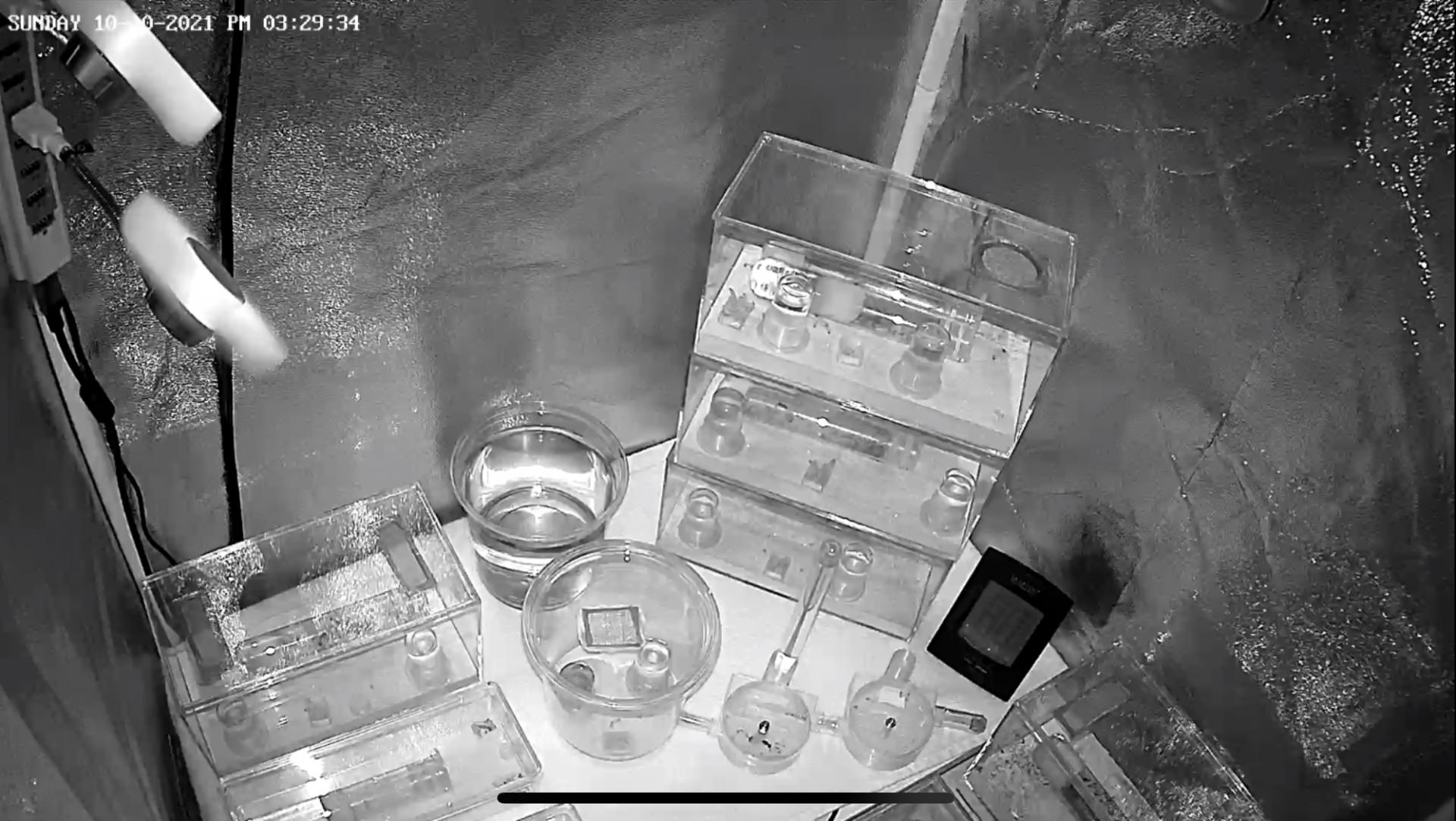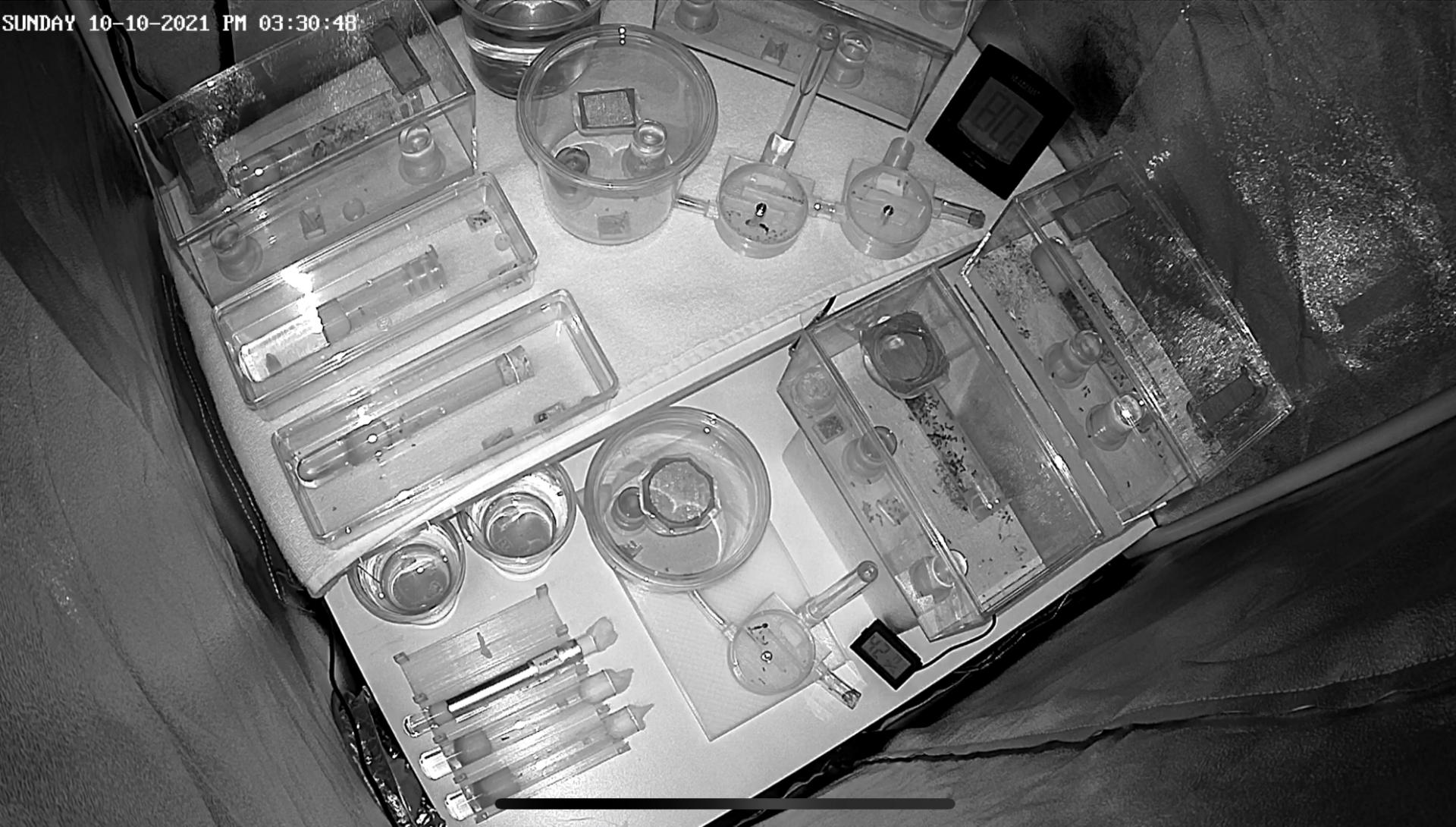So I have a grow tent that wasn’t being used and thought “If it is designed to keep extremely bright light inside, then it probably would be very dark if there wasn’t any light source inside.” and begun figuring out a way to fit my colonies inside safely and easily between feedings to keep them dark and warm. That was the easy part. A 40 watt ceramic heating bulb, heat mat thermostat, 2 usb fans, and an old powered multi-usb port. (Maintains set temp within a few of degrees as a minimum, depending on temp of room. I keep it at 79 and see the thermometer never dip below 78.)
It wasn’t until I decided that I was going to get a webcam with infrared “night” vision - TETHYS Wireless Security Camera 1080P Indoor [Work with Alexa] Pan/Tilt WiFi Smart IP Camera Dome Surveillance System w/Night Vision,Motion Detection,2-Way Audio,Cloud for Home,Business, Baby Monitor - (one of those Amazon deals situation), that I realized a grow tent isn’t designed with webcams in mind. In the video, you can see that this isn’t the ideal set up since the infrared reflects off of the tent walls and acrylic boxes extremely well, obscuring quite a bit of viewing areas available. The edges are even worse when it comes to viewing in infrared.
Having moved things around, stacked, raised, used different planes and finally complained about it to you, I am quite happy that I can “mostly” view my ants without disturbing them constantly. The webcam is tethered to a top corner and facing down.
What I really wanted to talk about in all of this is how different species look in the infrared frequencies. For me specifically, I’ve confirmed my webcam is sensitive, and LEDS are in a narrow band around 850 nm. I find it quite entertaining to how each species looks and is captured.
My Camponotus clarithorax are dark, long, thin, and move with fairly smooth movement.
My Camponotus semitestaceous look like shadows with darker heads and tips of their gasters. Dark, “barred” shadows slowly walking a short distance, stop, think, then walk a little more, stop, and continue this until they find something to do. Of course, that’s only if something gets them to start moving in the first place.
My Veromessor (pergandei?) and Crematogaster sp colonies are a blast to watch. It is very rare that there isn’t some sort of movement going on with them. The Veromessor colonies are big enough that there are a handful roaming around all the time. The Crematogaster colony is only at 13 workers with a couple of piles of brood but always one or two running around. Sometimes with a clear purpose, other times seem random, but always in high-speed mode. Both leave shadow trails behind them and sometimes can get up to be several lengths longer than the ant themselves. I’m constantly envisioning “The Flash”, but in ant world style. Especially for my Crematogaster workers. They do have the ability to move at variable speeds, they just seem to like 5th gear the most. Often, it’s like watching a dark sports car at a light turning green. All the while with the chasing shadow trail.
I have three Pogonomyrmex (regusos, montanus, and bicolor) queens that are just getting started, and are also recent acquisitions. I’ve noticed that all three seem to be fairly reflective of the 850 nm frequency and appear very light, relative to how dark they are in regular light. The bicolor workers have to be moving for me to even spot their “ghostly” shadows in infrared video.
It might just be me, it seems that my Pogonomyrmex rugosus queen is very sensitive to 850nm light frequency. She would pace her test tube constantly and I would never see her tending her brood. This is in stark contrast to all my other colonies, as they don’t see it, or it doesn’t bother them to any degree that I can see.
I want to hear about your experience with recording video in light frequencies outside of our standard “visible” spectrum for your ant colonies that don’t seem to be stressful to them. Would also appreciate ideas/suggestions with my current setup (keep in mind this is a hobby with limited/modest financial backing).
I’d like to upload video, I receive an error telling me I’m not permitted to upload this kind of file (.mp4), here are a couple of photos of my setup.
- Formiculture.com
- Forums
- Gallery
- Members
- Member Map
- Chat


















